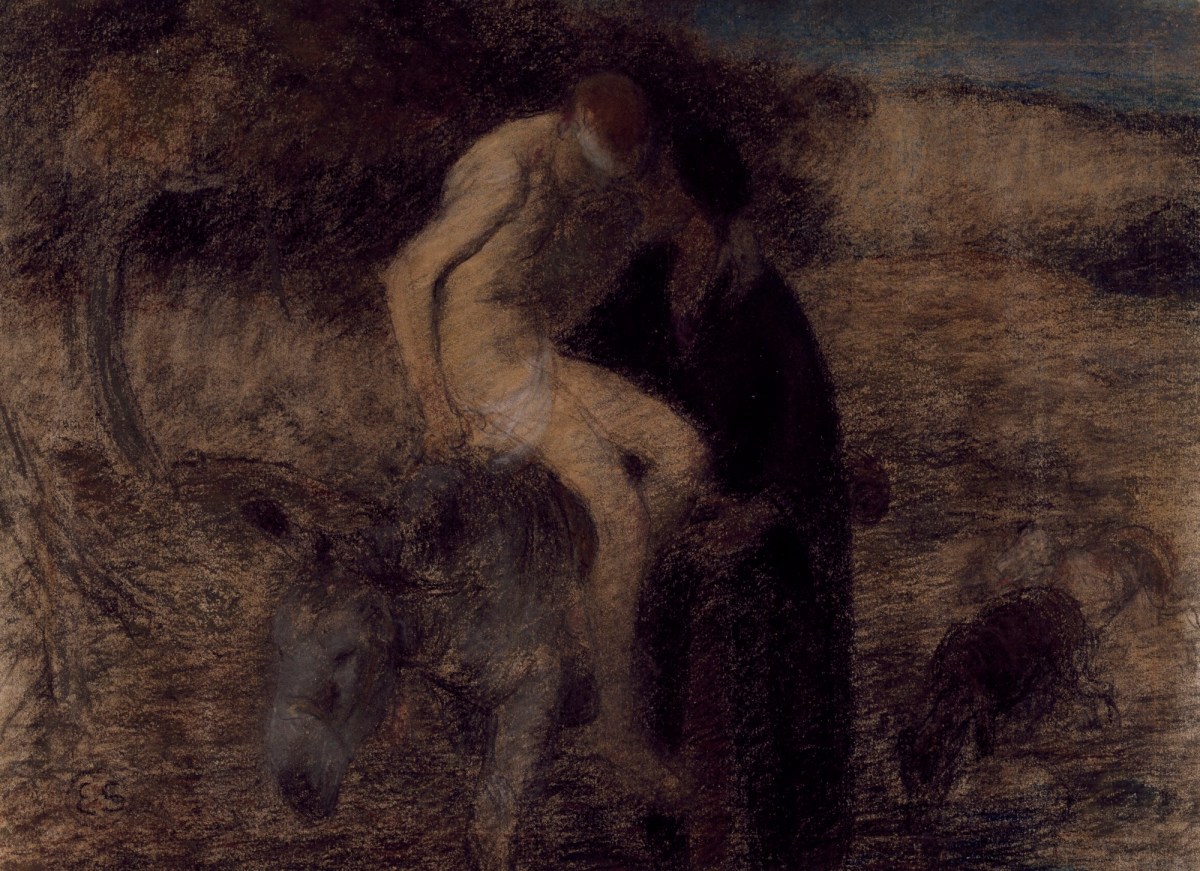
Edward Stott ARA, Study for 'The Good Samaritan', by 1910.
Pastel and crayon on paper. 296 mm. © Photo: Royal Academy of Arts, London. Photographer: John Hammond.
This image is not available to download. To licence this image for commercial purposes, contact our Picture Library at picturelibrary@royalacademy.org.uk
Study for 'The Good Samaritan', by 1910
Edward Stott ARA (1859 - 1918)
RA Collection: Art
A pastel and crayon study for the painting The Good Samaritan (Ferens Art Gallery, Hull), which was exhibited at the Royal Academy in 1910. The pastel and finished painting illustrate an episode from the Bible (Luke 10: 30-37) in which a Samaritan stops to help an injured man, as described in a parable by Jesus. The man has been robbed and beaten and is shown here wearing only bandages as the Samaritan helps him on to his donkey. The darkness of the landscape behind, more indistinct than in the finished painting, creates an atmospheric scene and heightens the whiteness and vulnerability of the young man's naked body. As well as owning the finished painting, the Ferens Art Gallery also owns three studies for the work.
Edward Stott was born in Rochdale, near Manchester, in 1859 and studied in Paris under Alexandre Cabanel and Carolus-Duran. During these formative years he was impressed by the work of French painters like Jules Bastien-Lepage, Jean-Baptiste-Camille Corot and Jean-François Millet, and began his career employing a 'plein air' style similar to that of George Clausen, Claude Monet and Henry Herbert La Thangue. Based in Amberley, West Sussex, from 1889 onwards, Stott concentrated on naturalistic depictions of rural life, which he would compose in a number of drawings before finishing the final painting in the studio. Stott frequently used pastel, a medium he valued for its spontaneity and hazy effects.
Described as 'the poet-painter of the twilight' in 1908, Stott imbued depictions of everyday life with an ethereal quality that is more overtly expressed in this biblical scene. Stott became increasingly interested in religious subjects later in his career and the list of his exhibits at the Royal Academy annual exhibition includes several similar titles: There was no room at the inn (1910), The Sacred Pool (1915), The Entombment (1915) and The Holy Family (1917).
This pastel was bequeathed to the Royal Academy by the artist Carel Weight RA, who was an avid collector of Stott's work.
Object details
296 mm
Start exploring the RA Collection
- Explore art works, paint-smeared palettes, scribbled letters and more...
- Artists and architects have run the RA for 250 years.
Our Collection is a record of them.



